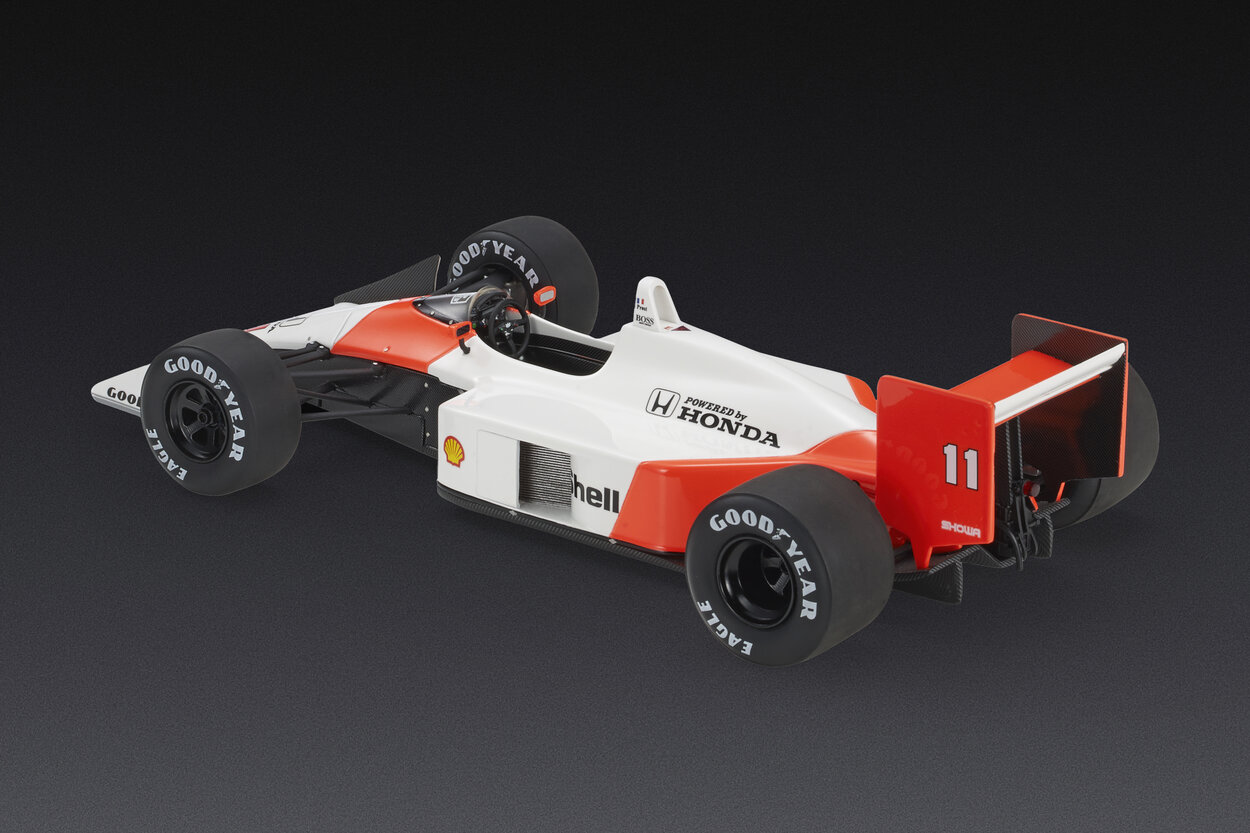McLaren MP4/4
With fifteen Grand Prix victories out of sixteen races, until the 2023 season, it was the car with the best winning percentage in relation to races contested. It’s the Woking team’s response to the departure of John Barnard, the designer of the MP4/2, which won five world championships over three years in the mid-1980s. And it’s the first McLaren designed by Gordon Murray, the legendary Brabham designer.
In designing the MP4/4, Murray reintroduces some of the concepts that underpinned the revolutionary but unfortunate Brabham BT55 of 1986. Honda, which has since replaced Porsche-TAG in engine supply, designs a lower engine – a 1.5-liter 80° V6 turbo – which fits well into a car that, while not as extreme aerodynamically as the BT55, is much lower than the units that preceded it.

Drivers:
Alain Prost: Seven victories aren’t enough for the two-time French world champion to win his third world crown. The competition within the team is strong this year. But in reality, what penalizes Alain isn’t so much the class of his teammate but rather the regulations, which only count the best eleven results towards the world championship standings. Prost, who adds seven victories to an equal number of second places, is thus forced to discard significant points. Despite accumulating more points than Ayrton, in the end, he must settle for runner-up.
Ayrton Senna: The Brazilian also has to discard some points for the world championship standings. But in his case, it’s only four points (his teammate discards 18). Thus, with Prost totalling 105 points and Senna 94, Ayrton becomes world champion with 90 points against Alain’s 87. Soon after, the scoring method would understandably be changed. Nevertheless, Senna’s 1988 sees him atop the podium eight times, securing pole position 13 times, and setting the fastest lap three times.
Our model cars:

Thanks to a slim, tapered nose, a very low and wide front section, and an engine that stays within the desired height and size limits set by Murray, the large rear wings generate downforce and increase aerodynamic load on the driving wheels. The result is a spectacular single-seater that dominates the competition without apparent effort.
We said fifteen wins out of sixteen races. But it should also be noted that ten of those fifteen victories were one-two finishes, with the two McLaren drivers sharing the top two steps of the podium. Completing the world championship season – both Drivers’ and Constructors’, naturally – are 15 pole positions and 10 fastest race laps.

